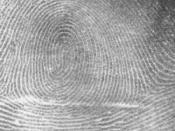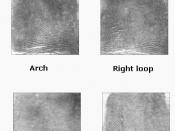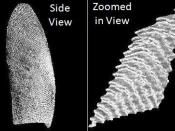Fingerprinting as a Science and a Point of Evidence in Court
Finger print evidence is by no means an exact science; yet, it does, unfortunately, weigh a great deal in the minds of jurors who give it more credit than it deserves. Fingerprints are unique to every person - it is estimated that the chance of two people having the same fingerprint is one in sixty-four billion - however, many cases occur in which the experts cannot agree on the same evidence as it is very much up to one's own interpretation. It is surprising, therefore, that until recently the 'science' of fingerprinting has never been put under scientific scrutiny.
Fingerprints, once found at the scene of a crime, must be expertly assessed and scrutinised to come up with a match. The British pioneer in fingerprinting, Frances Galton, worked out that there are between thirty-five and fifty points on a fingerprint that can be used to identify a person.
These points are called minutiae. Galton said that twenty-five matching minutiae were needed to classify two fingerprints as the same. However, Scotland Yard in the UK requires only a minimum of sixteen similarities and Australia requires twelve. The USA and Canada have no minimum standard, though the USA recognises that a print with less than twelve similarities is not reliable.
Even when the required amount is met there is no certainty or assurance that two fingerprints are the same. Not all experts in the field will agree, and where one expert may confidently say that the likenesses between two prints are above the minimum standard, another will just as easily say that the requirements have not been met. The experts working for the state are under pressure to find incriminating evidence, and often find similarities which do not exist. In the...


